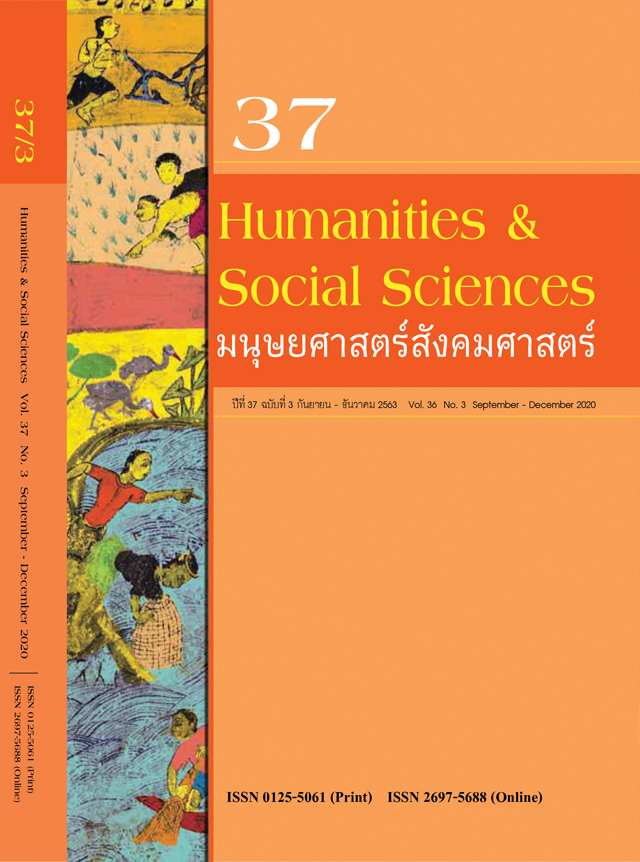ตัวแบบการจัดการสิ่งแวดล้อมของวัดในภาคอีสาน
Environmental Management Model of Isan Buddhist Temple
Keywords:
Environmental Management, Management Model, Isan Buddhist TempleAbstract
Abstract
The objective of this article is to present the environmental management model of Isan Buddhist temples. In-depth interviews and non-participatory observations were employed to elicit data from three communities of three provinces in Northeastern Thailand. ATLAS.ti software program was used to analyze data. Results showed that the environment model of the Isan model consisted of three elements. The first element was agencies (stakeholders) which include two levels of (1) individual agencies who were monks, community leaders, and people in the community, and (2) collective agencies who were government organizations, the elderly group, and public health volunteers. The second element was management ability including social capital, cultural capital, physical capital, human capital, and institutional capital. The third element was two motivations: internal and external. These two were seen conserving the management. The internal motivation was from the monk action with dharma discipline, perception of environmental values, capital, and the belief or public values to the environment. The external motivation was value building of the waste and environmental competition.
Keywords: environmental management, management model, Isan Buddhist temple
References
พุทธรักษ์ ปราบนอก. (2562). ปัญหาภาวะโลกร้อนของวัดในพุทธศาสนา. มนุษยศาสตร์สังคมศาสตร์, 36(2), 163-175.
รังสรรค์ สุคำภา. (2560). จริยศาสตร์ด้านสิ่งแวดล้อมกับการเมืองด้านสิ่งแวดล้อม: จากแนวคิดสู่การปฏิบัติ. วารสารเอเชียตะวันออกและอาเซียนศึกษา, 17(1), 137-169.
โสวิทย์ บำรุงภักดิ์ และพระวิมาณ คัมภีรปัญโญ. (2561). ความเกื้อกูลต่อระบบนิเวศตามหลักทางพุทธศาสนา. มนุษยศาสตร์สังคมศาสตร์, 35(3), 129-151.
Barrow, C. (2006). Environmental management for sustainable development. New York: Routledge.
Bennett, N. J., Whitty, T. S., Finkbeiner, E., Pittman, J., Bassett, H., Gelcich, S., & Allison, E. H. (2018). Environmental stewardship: A conceptual review and analytical framework. Environmental management, 61(4), 597-614.
Berkes, F. (2004). Rethinking community‐based conservation. Conservation biology, 18(3), 621-630.
Campos-Silva, J. V., & Peres, C. A. (2016). Community-based management induces rapid recovery of a high-value tropical freshwater fishery. Scientific reports, 6, 34745.
Chamaratana, Thanapauge; Lukk W. J. Knippenberg, Edwin B. P. De Jong, Phuttarak Prabnok, Kritsada Phatchaney, and Rasita Dasri. (2019). “Tri-Patterns of Community Network for Carbon Emission Reduction in Thai-Isan Urban.” Journal of Physics: Conference Series 1340: 1-16. https://doi:10.1088/1742-6596/1340/1/012045
Chan, K. M., Balvanera, P., Benessaiah, K., Chapman, M., Díaz, S., Gómez-Baggethun, E., ... & Luck, G. W. (2016). Opinion: Why protect nature? Rethinking values and the environment. Proceedings of the National Academy of Sciences, 113(6), 1462-1465.
Fernandes, J. P., & Guiomar, N. (2016). Environmental ethics : driving factors beneath behavior, discourse and decision-making. Journal of Agricultural and Environmental Ethics, 29(3), 507-540.
Joe Myers. (2016). What is the Anthropocene? And why does it matter?. Retrieved October 6, 2018, from https://www.weforum.org/agenda/2016/08/what-is-the-anthropocene-and-why-does-it-matter/.
Jolly, V. (1978). The Concept of Environmental Management. In Dest Bandhu, Veena Bhardwaj, J.L. Bhat. (Ed.). Managing the Environment (pp. 23 - 47). New Delhi: Indian Environmental Society.
Krasny, M. E., & Tidball, K. G. (2012). Civic ecology: a pathway for Earth Stewardship in cities. Frontiers in Ecology and the Environment, 10(5), 267-273.
Miles, M. B., Huberman, A. M., Huberman, M. A., & Huberman, M. (1994). Qualitative data analysis: An expanded sourcebook. London: Sage.
Riehl, B., Zerriffi, H., & Naidoo, R. (2015). Effects of community-based natural resource management on household welfare in Namibia. PloS one, 10(5), e0125531.
Ryan, R. M., & Deci, E. L. (2000). Intrinsic and extrinsic motivations: Classic definitions and new directions. Contemporary educational psychology, 25(1), 54-67.
Wolf, K. L., Blahna, D. J., Brinkley, W., & Romolini, M. (2013). Environmental stewardship footprint research: linking human agency and ecosystem health in the Puget Sound region. Urban Ecosystems, 16(1), 13-32.
Worrell, R., & Appleby, M. C. (2000). Stewardship of natural resources: definition, ethical and practical aspects. Journal of agricultural and environmental ethics, 12(3), 263-277.



